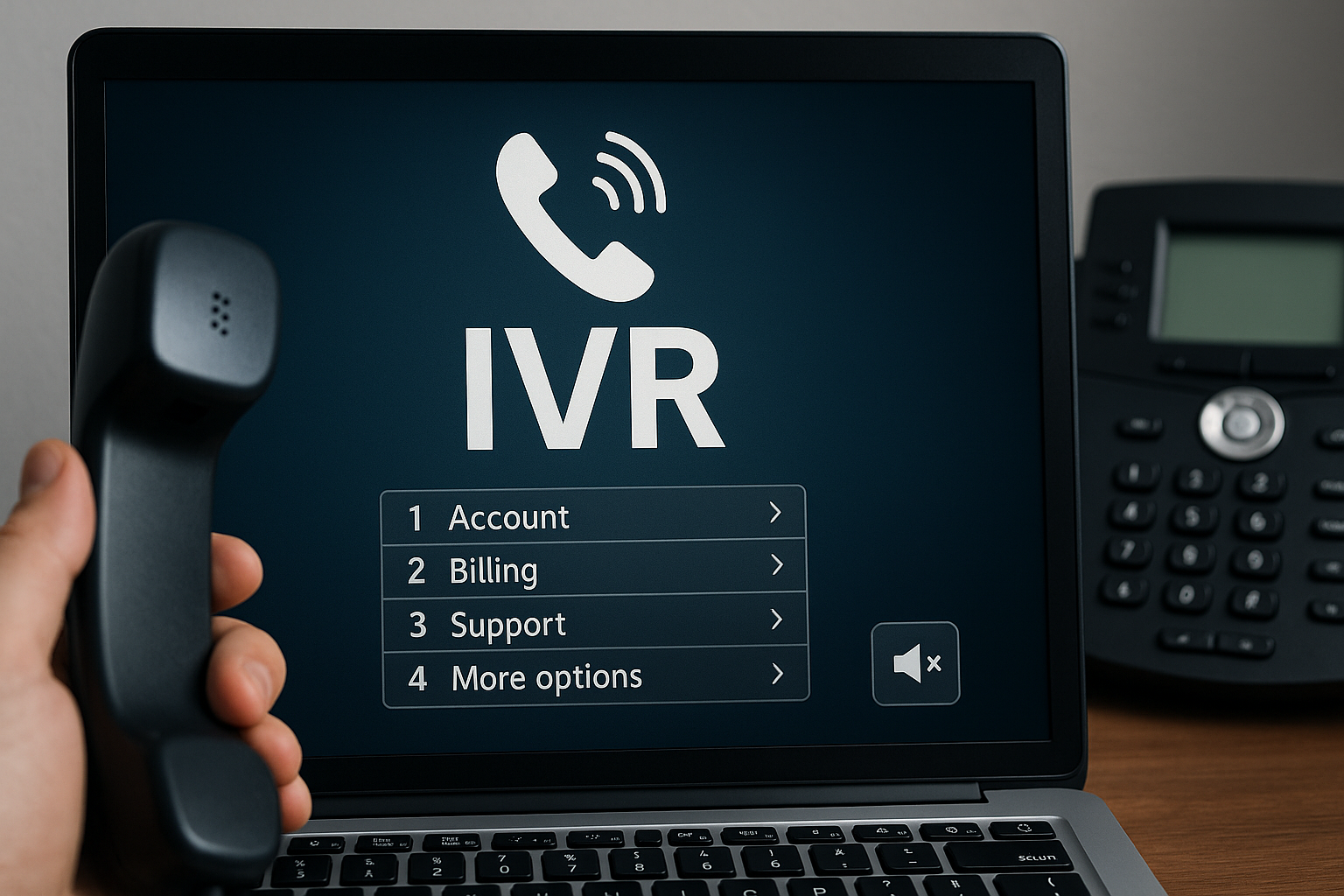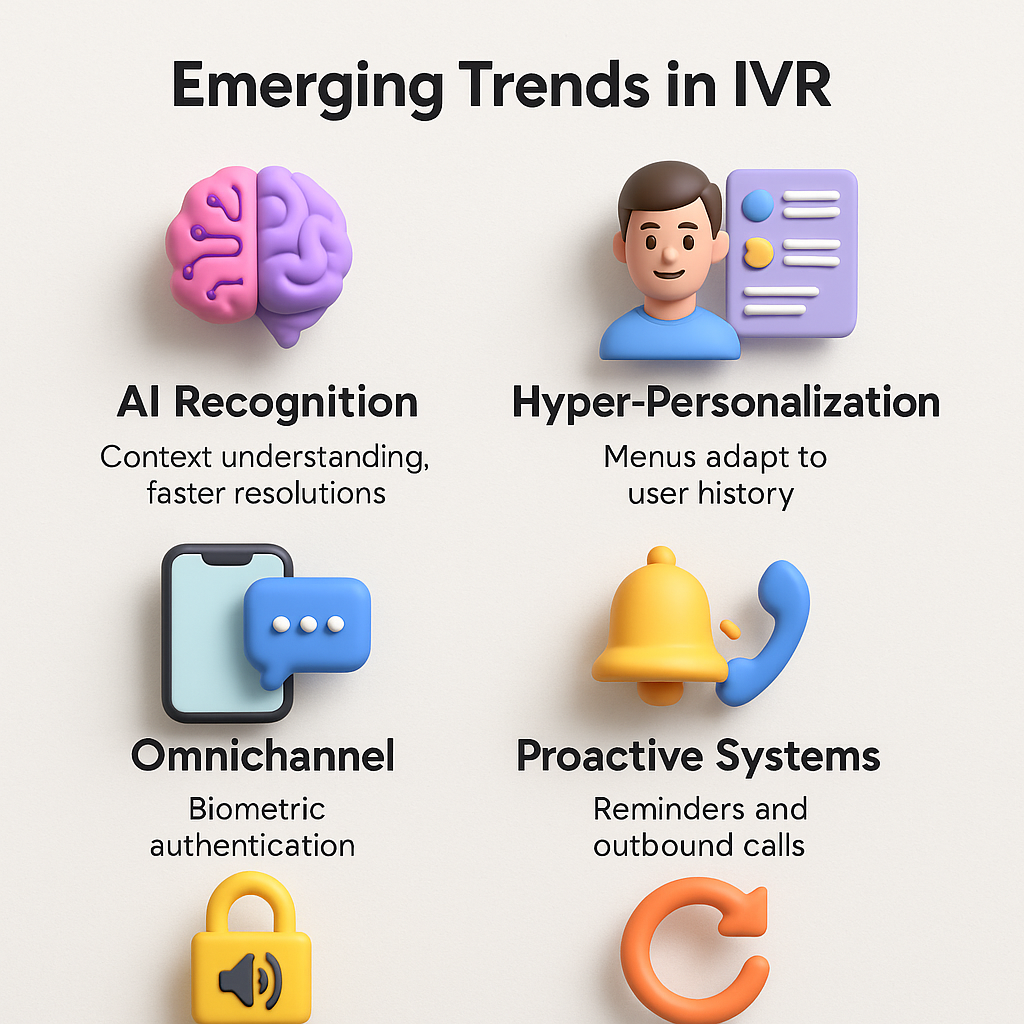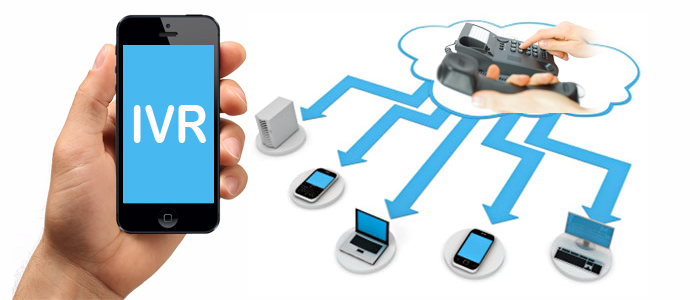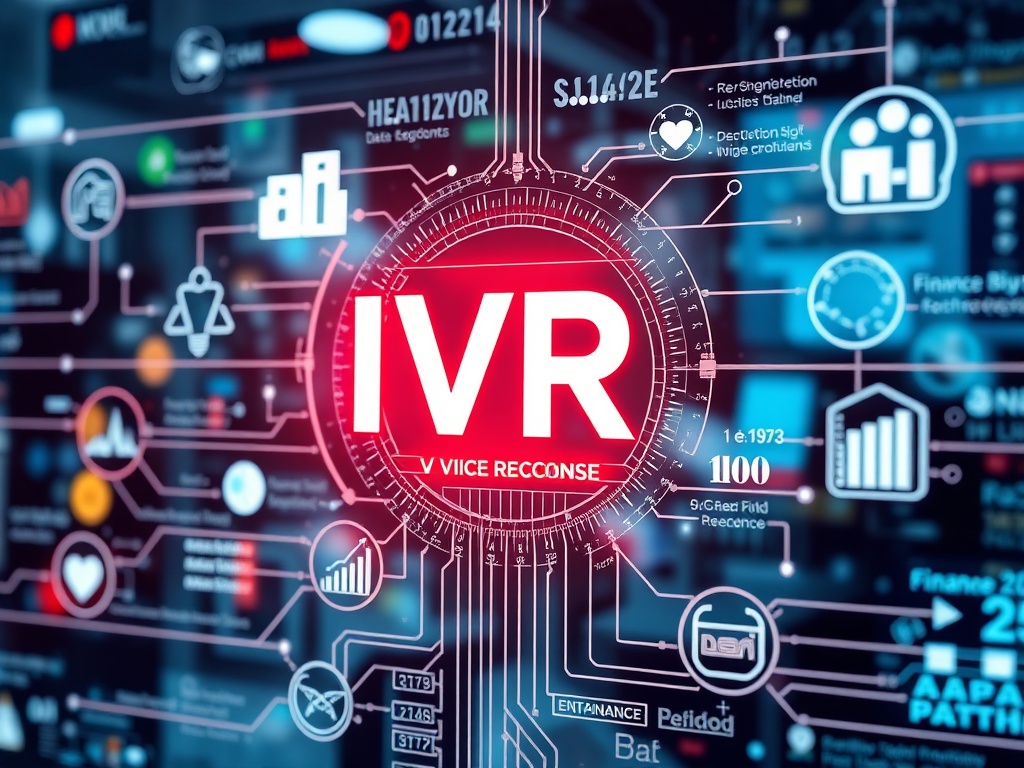Interactive Voice Response (IVR) has existed for decades, yet its efficiency is still questioned. The promise is faster service, fewer errors, and reduced workload for staff. In practice, many systems fall short. Outdated recognition and complex menus often frustrate customers instead of helping them.
True efficiency means more than routing calls. It relies on speed, accuracy, and usability. Banking and healthcare use IVR daily, but complaints about robotic voices remain common.
The World Health Organization stresses the role of digital tools in access to care, while NIH research highlights the importance of user experience in human computer interaction.

Core Elements That Shape IVR Efficiency
The efficiency of IVR depends on a set of foundational technologies that work together to create a smooth experience. Each component addresses a different challenge in communication.
Speech recognition is the most visible feature for users. A system must recognize natural speech across accents, dialects, and even regional phrases. Although accuracy has improved, background noise and unclear phrasing remain barriers. For example, in a busy hospital call center, even advanced recognition may misinterpret a patient request. The NIST evaluations confirm steady progress in recognition accuracy, but also show that performance still varies in complex environments.
DTMF input, or keypad tones, remains critical as a backup. Customers may prefer pressing numbers when recognition struggles or when they want faster control. This fallback prevents call failures and is particularly important for elderly users who may not be comfortable with voice commands.
Database connectivity is another core layer. Efficient IVR requires real time access to customer records. In banking, this means retrieving account balances instantly. In healthcare, it means checking appointment availability or updating prescription requests without delay. Without strong integration, the system risks giving outdated or incomplete information.
Text to speech technology has evolved rapidly. Early IVR relied on pre recorded voices, which sounded robotic and repetitive. Modern engines now generate dynamic, natural voices that adapt tone and rhythm. This shift reduces caller fatigue and creates a more conversational experience. The Mayo Clinic overview shows how such digital tools enhance patient communication in telehealth settings. Products like the Graphlogic Text-to-Speech API demonstrate how lifelike synthesis can replace static recordings, making IVR interactions more human.
Together, these components define the quality of IVR. A system with accurate speech recognition, keypad backup, strong data integration, and natural voices delivers real efficiency. One that lacks any of these often fails to meet user expectations.

Historical Context and Early Lessons
IVR entered commercial use in the 1970s. One of the earliest popular systems was Moviefone, which let people check movie times by entering their zip codes. At its height, Moviefone handled over 3 million calls per week. This was revolutionary. Customers could get information instantly without waiting for a live operator.
Early IVR was expensive, rigid, and often frustrating. Monotone voices and limited menus created negative impressions. Only large corporations could afford to deploy such systems. Yet the concept proved that automation could scale and deliver real benefits.
Modern IVR has moved far beyond those early systems. Today it integrates artificial intelligence, natural language processing, and real time analytics. Banks authenticate customers through voice biometrics. Healthcare providers allow patients to request prescription refills without speaking to staff. The complexity is greater, but so is the potential for personalized, adaptive service.

Industry Applications
IVR has become an essential tool across industries because it automates routine interactions while keeping service accessible at any time of day. Each sector adapts IVR to its specific needs, which shows the flexibility of this technology.
Banking and finance rely heavily on IVR for high volume transactions. Customers can check balances, review recent activity, and transfer funds without waiting for a live agent. Identity verification through voice biometrics strengthens security while also reducing fraud attempts. This combination of convenience and safety makes IVR one of the most cost effective tools for banks managing millions of calls daily.
Healthcare providers use IVR to handle tasks that otherwise overwhelm staff. Patients can confirm or reschedule appointments, request prescription refills, or receive reminders about upcoming visits. Automated systems free staff from repetitive calls and reduce waiting times for patients. In some cases, IVR connects directly with electronic health record systems, ensuring accurate updates. The CDC research confirms that automation of this kind lowers administrative load and speeds patient communication, which improves care quality.
Education systems also benefit from IVR. Schools use it to notify parents about attendance, grades, or schedule changes. Automated calls ensure that important updates reach families quickly and consistently, without adding pressure on teachers or administrative staff. This is particularly valuable in districts where staff resources are limited.
Media organizations integrate IVR to conduct surveys, run interactive campaigns, and collect viewer feedback. For example, television networks use automated calls to gather audience opinions after shows or events. The system allows responses at scale without manual data entry, improving both reach and accuracy of audience insights.
Across all these fields, IVR shows its versatility. What unites the use cases is efficiency: faster processing, lower cost, and higher consistency in communication.

The Technical Foundations of Efficiency
The efficiency of any IVR system depends on multiple interconnected technical layers. When even one of these layers fails, overall system performance and reliability suffer, regardless of how well the other components function.
Speech Recognition with DTMF Backup
Speech recognition has become the preferred interaction method, as most users want to communicate naturally. However, background noise, strong accents, or unclear phrasing can reduce recognition accuracy. In such cases, DTMF (dual tone multi-frequency) input — keypad tones — provides a seamless fallback. This redundancy ensures uninterrupted interaction. For example, a banking customer can press numbers to confirm identity if voice recognition struggles. The combination of speech and keypad input is critical for accessibility, resilience, and user trust.
Natural-Sounding Text-to-Speech
Modern text-to-speech (TTS) technology has moved far beyond robotic monotone voices. Advanced engines now modulate pitch, tone, and rhythm, creating a natural, human-like delivery. This not only makes conversations smoother but also reduces caller fatigue during long sessions. Dynamic voice generation, replacing static recordings, elevates professionalism and transforms customer expectations, making IVR systems feel more responsive and trustworthy.
Reliable Infrastructure and Real-Time Data
Behind the scenes, robust networks and synchronized databases provide the foundation for IVR scalability. TCP/IP architectures enable high-volume processing, while real-time database synchronization ensures accuracy. In healthcare, this means patients always hear up-to-date appointment details. In finance, customers instantly access correct balances and transactions. Without this infrastructure, even the best-designed IVR system risks delivering outdated or misleading information.
Analytics and Continuous Optimization
Analytics and monitoring tools form the feedback loop that keeps IVR systems evolving. By tracking call duration, drop-off points, and recognition accuracy, organizations can pinpoint friction areas and optimize menu flows. For instance, if many users abandon a call at the same step, analytics reveal where simplification is needed. These insights are vital to maintaining both efficiency and customer satisfaction.
Building Consistency and Trust
When combined — accurate speech recognition with DTMF fallback, natural TTS, reliable infrastructure, and robust analytics — these elements form a system that is not only efficient but also consistent and trustworthy. Without real-time synchronization or performance monitoring, even sophisticated IVRs risk frustrating users. With them, businesses deliver seamless, professional, and user-friendly experiences that strengthen customer confidence.

Limitations and Challenges
Despite progress, IVR faces three recurring problems.
- Speech recognition errors remain common. Background noise, accents, or ambiguous commands can reduce accuracy. For instance, a healthcare IVR may fail to interpret patient responses correctly during a noisy call.
- Complex or unfriendly user experience causes high abandonment rates. Callers often drop out if menus are too long or confusing.
- Integration barriers raise costs and slow adoption. Many organizations rely on legacy systems that are difficult to connect with modern IVR platforms.
Retail firms frequently face this issue when attempting to link IVR with outdated inventory databases, leading to errors and poor service.
Benefits of Well Designed IVR
An intelligently designed IVR system does more than route calls — it creates measurable business and customer experience gains across multiple dimensions.
Increased Efficiency
Streamlined menus and advanced recognition capabilities reduce call handling times, which can cut customer wait times by as much as 30%. This not only accelerates problem resolution but also frees up agents to handle more complex cases where human input is essential.
Cost Savings
By automating routine inquiries — such as balance checks, appointment confirmations, or order tracking — IVR reduces reliance on live staff. Companies can lower operational expenses by up to 25%, while reallocating resources toward higher-value services.
Improved Customer Satisfaction
Quick and accurate resolutions drive loyalty. Customers who feel their time is respected are more likely to return, recommend the brand, and remain engaged over the long term. A well-designed IVR minimizes frustration and transforms what was once a pain point into a positive touchpoint.
Actionable Data Collection
IVR systems can incorporate automated post-call surveys or track interaction data to provide valuable insights. Patterns in customer behavior, frequently asked questions, and pain points can guide product improvements, service enhancements, and strategic planning.
Brand Reinforcement
The voice of an IVR system is often the first interaction a customer has with a company. Consistent tone, vocabulary, and style reinforce brand identity. A friendly, professional, and trustworthy voice can subtly strengthen customer perception and position the brand as reliable and approachable.

Emerging Trends in IVR
The next decade will fundamentally reshape interactive voice response (IVR), moving far beyond the rigid, menu-driven systems of the past. Modern IVR will evolve into intelligent, adaptive platforms that improve both customer experience and operational efficiency. Key trends include:
AI-Driven Recognition
Advances in deep learning are transforming speech recognition. Future IVR systems will not only transcribe words more accurately but also interpret intent, tone, and context. This contextual understanding reduces customer frustration, shortens call times, and allows for more natural, conversational interactions.
Hyper-Personalization
Static menus will give way to adaptive interfaces tailored to individual users. IVR platforms will draw on customer history and preferences to present the most relevant options first. For example, a frequent traveler may be offered flight status updates or booking modifications as the default menu items, saving time and effort.
Omnichannel Integration
IVR will no longer function in isolation. Seamless integration with chatbots, mobile apps, and messaging services will allow customers to move across channels without repeating information. A conversation started on WhatsApp, for instance, could continue through IVR or a live agent with full context preserved.
Proactive Engagement
Next-generation IVR will take initiative instead of waiting for inbound calls. Proactive notifications, such as healthcare appointment reminders, banking fraud alerts, or utility service updates, will enhance customer care and reduce the need for manual follow-ups.
Stronger Security with Voice Biometrics
Authentication will shift away from traditional PINs and passwords. Voice biometrics will offer a secure, user-friendly way to verify identity, balancing convenience with enhanced protection against fraud.
Continuous Learning Loops
Modern IVR will feature self-optimizing systems. Real-time feedback from customer interactions will feed directly into machine learning models, enabling dynamic improvements in accuracy, responsiveness, and overall performance without requiring manual reprogramming.

Platforms like the Graphlogic Generative AI & Conversational Platform already combine AI recognition, predictive response, and personalization, showing how these trends converge.
Practical Guidance for Businesses
Organizations planning investments in IVR should follow a set of guiding principles to ensure systems are efficient, inclusive, and customer-friendly.
1. Simplicity First
Keep menus concise and intuitive. Each tier should offer no more than three options to avoid overwhelming callers. A streamlined flow reduces cognitive load, speeds up navigation, and minimizes frustration.
2. Continuous User Testing
Regular usability testing with real customers is essential. Feedback highlights confusing prompts, unnecessary steps, or technical glitches. Iterative improvements based on this input ensure the IVR remains relevant and effective over time.
3. Analytics and Monitoring
Tracking key metrics — such as completion rates, average handling time, and call drop-offs — helps pinpoint bottlenecks. These insights allow organizations to optimize flows, reword prompts, or restructure menus where needed.
4. Fallback Inputs
Always provide alternative input methods, such as keypad entry, to accommodate users who are less comfortable with voice recognition. Inclusivity ensures no customer is left behind due to technical or accessibility barriers.
5. Natural Voice Updates
Upgrading to natural-sounding, expressive synthetic voices significantly improves engagement. A warm, human-like tone builds trust and makes the interaction feel less mechanical, especially in sensitive contexts like healthcare or finance.
Real-World Example
One healthcare provider simplified its IVR menus, reduced branching depth, and implemented analytics monitoring. As a result, it lowered average handling time by 20% while boosting patient satisfaction scores. This demonstrates how small design changes can deliver measurable business value.

Comparing Providers
The choice of an IVR platform depends on what matters most for the organization: reliability, depth of integration, flexibility, or cost efficiency. The market is dominated by several well-established players, each with distinct strengths and trade-offs.
| Provider | Strengths | Weaknesses | Typical Performance |
| Genesys Cloud CX | High speech recognition accuracy, strong omnichannel features, advanced analytics | Higher cost compared to peers | ~85% call handling success |
| Avaya OneCloud | Deep enterprise system integration, voice biometrics support | Expensive, more complex setup | ~80% call handling success |
| Cisco UCCX | Scalability, robust analytics, highly reliable | Higher cost of ownership | 78–82% call handling success |
| Five9 IVR | AI-driven routing, cloud flexibility, good price-to-performance ratio | Less feature depth for very large enterprises | 75–80% call handling success |
| Twilio Flex IVR | Highly customizable via API, low entry cost | Requires more in-house engineering effort | 70–75% call handling success |
Key Takeaways
- Genesys and Cisco are best suited for large organizations that prioritize reliability, integration, and advanced analytics.
- Avaya remains strong for enterprises already embedded in its ecosystem, where compatibility is critical.
- Five9 is a solid fit for mid-sized companies seeking cloud-first solutions with predictable pricing.
- Twilio Flex is ideal for tech-savvy businesses that value customization and are willing to invest engineering resources to tailor workflows.
The Future of IVR in Healthcare and Finance
Healthcare and finance will continue to lead IVR adoption, as both sectors demand secure, reliable, and highly efficient communication systems.
In healthcare, IVR is moving far beyond simple appointment reminders. The next wave of adoption focuses on integration with electronic health records (EHRs), enabling patients to securely access lab results, prescription updates, and discharge instructions through natural voice interactions. Hospitals are already piloting systems where IVR can triage calls, route patients to the correct department, and even provide pre-operative or post-treatment guidance. During peak demand seasons, such as influenza outbreaks, predictive analytics integrated with IVR will allow providers to dynamically adjust staffing levels and automate patient outreach to reduce pressure on frontline staff. IVR combined with speech-to-text and sentiment analysis will also help flag urgent cases where a patient’s tone or wording suggests distress, enabling faster intervention.
In finance, IVR will continue to play a central role in fraud detection and identity verification. Biometric voiceprints are becoming an industry standard, allowing customers to authenticate transactions by voice rather than relying on PINs or passwords. This not only reduces fraud but also improves customer experience by removing friction from authentication processes. Advanced IVR platforms are also expected to offer real-time payment status updates, loan application tracking, and proactive fraud alerts without requiring customers to speak to an agent. Integration with AI-driven transaction monitoring will allow banks to flag suspicious activity and immediately verify details with the customer via secure IVR prompts.

Both industries require systems with very high accuracy, compliance, and trust. In healthcare, regulatory frameworks such as HIPAA and GDPR make secure data handling non-negotiable. In finance, IVR must align with PCI DSS standards to protect payment card data. Future systems will embed encryption and real-time monitoring to ensure compliance while still maintaining fast and user-friendly interactions.
Looking forward, IVR in healthcare and finance will not exist in isolation. Instead, it will be part of hybrid service ecosystems where IVR, chatbots, mobile apps, and human agents collaborate seamlessly. Patients may start a query via an IVR system and then shift to a secure telehealth session, while banking customers might confirm a payment through IVR before continuing on a mobile banking app. The line between self-service and live service will blur, with IVR serving as the trusted gateway.
Final Thoughts
IVR remains essential in customer communication. The best systems reduce waiting times by 30% and lower costs by 25%. The worst systems frustrate customers and erode trust. The difference lies in design, integration, and ongoing updates.
The future will bring IVR closer to natural conversation. It will connect across channels, adapt in real time, and personalize interactions. Organizations that see IVR as a living system that requires continuous improvement will gain competitive advantage. Those that ignore customer experience will lose trust.
As technology and expectations evolve, IVR will remain central, not as a relic of the 1970s but as an adaptive platform that combines AI, personalization, and security to improve service in healthcare, banking, and beyond.
FAQ
Efficiency means reducing wait times, increasing accuracy, and providing simple navigation. The combination of speech recognition, keypad fallback, and real time databases creates strong performance.
Users dislike long menus, robotic voices, and poor recognition accuracy. These issues frustrate callers and push them toward live agents.
By automating call handling, IVR reduces the need for staff. Organizations can cut operational expenses by up to 25%.
Yes. Systems that provide fast, accurate, and simple experiences increase satisfaction and loyalty.
Yes, when voice biometrics and real time authentication are used. Integration with outdated systems remains a risk, but modern platforms are secure.
Banking, healthcare, media, and education benefit significantly. Each industry applies IVR differently, but all rely on automation for scale.

